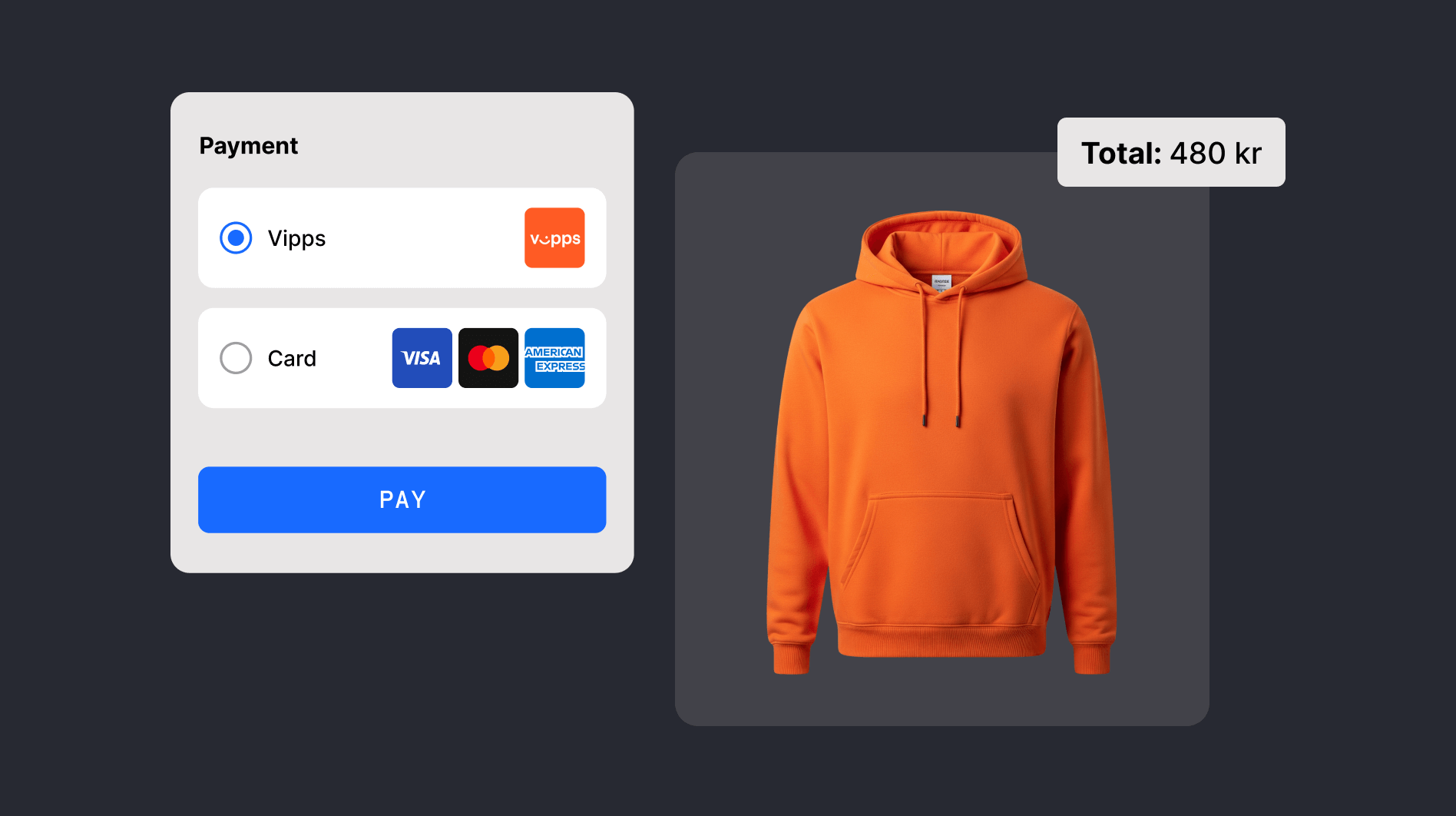As new payment technology emerges, the way consumers, businesses, and individuals are moving money around is evolving fast.
In fact, the only thing that’s moving quicker than the industry is the speed of the payments themselves – and here’s where real-time payments come in.
Below, we’re breaking down what real-time payments are, and how they differ from ACH and wire transfers. We’ll unpack the three main real-time payment networks in the US – RTP, FedNow, and Zelle – and unpick the five steps of a real-time payment in practice.
We’ll also be looking at how real-time payments work, where they’re used, and – most importantly – how they stand to change the game for merchants now, and going forward.
Can your business benefit from real-time payments in 2024? Let’s find out.
What are real-time payments?
Real-time payments (also known as immediate payments or instant payments) are any transfer of funds between two parties that makes the money received immediately available to the recipient. The funds will show up instantly in the payee’s balance; and, likewise, be instantly deducted from the payer’s bank account.
Real-time payments are available 24/7, 365 days a year – enabling in-the-moment transactions regardless of holidays, weekends, or periods of bank inactivity.
So – do ACH transfers, wire transfers, and mobile payments all count as real-time payments?
No. While these all remain popular and effective ways for businesses, consumers, and private individuals to pay, the networks they’re processed through, the parties involved, and the length of time they all take to process mean they aren’t the same as real-time payments.
- ACH transfers, for instance, are not instant: they can take up to five business days to process, and even same-day ACH payments (provided they’re sent before the cut-off date) still take several hours to reflect in the payee’s bank balance.
- Wire transfers occur between two banks rather than through an RTP network – and because banks operate at a slower pace, payments made through wire transfers can take up to 48 hours to arrive in their recipient’s account.
- Mobile payments still require a settlement period, and funds received by a merchant through a customer’s digital wallet – such as using Google Pay, Apple Pay, or Samsung Pay from their mobile phone – don’t appear immediately in the business’s account.
Crucial to remember is that, because real-time payments go through instantly, they’re irreversible. Both parties – the payer and payee – will be unable to deauthorize the transfer once it’s gone through.
What is a real-time payment network?
The term ‘real-time payment network’ refers to the collected infrastructure that makes up a payment processing system. And not just any payment system, of course: only one in which individuals can send and receive money between each other’s banks instantly, 24/7.
Real-time payment networks differ across countries. In the US, for example, there are three key real-time payment networks:
- The Real-Time Payments (RTP) network, launched in 2017 and owned by The Clearing House, a member-based organization owned by the country’s top banks; and
- FedNow, a real-time payment network backed by the Federal Reserve. FedNow went live in July 2023 as a service for banks and credit unions to adopt on behalf of their customers. As of March 2024, around 470 financial institutions in the US have signed up – around 5% of the total – but we expect this to grow as the network gains pace.
- Zelle, a real-time payment network operated by Early Warning Services: a company owned by Bank of America, Capital One, JP Morgan Chase, PNC Bank, Trust, U.S. Bank, and Wells Fargo. It was launched in 2017.
But it’s not only the US that has its own real-time payment networks. Some international examples include:
- The UK’s Faster Payment System (FPS), established 2008
- India’s Immediate Payment Service (IMPS), since 2010
- Singapore’s PayNow, which went live in 2017
- Australia’s New Payments Platform (NPP), founded in 2018
- Brazil’s Pix, launched in 2020
Learn more: What is FedNow?
How do real-time payments work?
A real-time payment involves five different parties:
- The payer
- The payer’s financial institution
- The payee
- The payee’s financial institution
- The RTP network
When a merchant initiates a payment, a unique identifier – which contains the transaction details and the amount to be paid – is sent to the customer’s device.
Then, the customer simply confirms those details to finalize the payment on their end from the app or service they’re using to make the real-time payment. From there, the app works with both the merchant’s and the customer’s bank to shore up the final details – and authorize the payment.
The RTP network acts as a kind of mediator – a crucial ‘middleman’ that validates the transaction and verifies there are sufficient funds in the payer’s bank account before accepting (or rejecting) the payment. It’s this network, which is much faster than traditional banks working directly together, that enables real-time payments to actually be in real-time – and neatly sidestep the hours, and days, ACH and wire transfers require.
Learn more: Open loop payments
The five steps of a real-time payment: explained
Want a deeper, more detailed dive into the process of a real-time payment? Read on.
1. The payer initiates the real-time transaction
A real-time payment begins when an individual chooses to send money to a recipient. This could be a person reimbursing a friend or family member, paying a business or supplier for goods or services, or settling a tax payment to the government or other official entity.
Real-time payments are typically ‘push’ payments, in which the sender initiates the payment, rather than ‘pull’ payments (such as direct debits) triggered by the recipient.
To do this, the payer simply opens their mobile banking app, logs into their bank’s online portal, or heads into their local branch to do this in person. The only caveat? Both they, and the intended recipient of the funds, must bank with a financial institution that supports RTP payments in the US. At the time of writing (March 2024) more than 280 banks and credit unions support transactions through the RTP network; 470 are enrolled in FedNow.
2. The bank authenticates and authorizes the transaction
Before it approves the transaction, the payer’s bank verifies that payer’s identity through one or more techniques (such as biometric verification, passwords, and multi-factor authentication) to make sure that they are who they say they are. At this stage, the bank will also verify that the sender’s account contains enough money to complete the transaction.
3. The bank processes the transaction via the relevant real-time payment network
With the bank’s authorization granted, it then sends, via the relevant real-time payment network (either RTP, Zelle, or FedNow), a payment instruction.
As the name suggests, this payment is processed in real-time, meaning the funds will be debited from the sender’s account without delay, and appear – ready to use – in the recipient’s account with equal immediacy.
4. The payee and the payer are both notified
From here, things work similarly to a regular payment, with both the sender and recipient of the funds receiving a notification from their respective banks: typically via SMS, email, or push notification. Like all other aspects of a real-time transaction, this notification happens in real-time, allowing each party to better manage their cash flow and finances.
5. The transaction is settled in real-time
Unlike ACH payments – which are ‘batched’ together for settlement, making them cheaper but slower – real-time payments are settled in real-time, almost simultaneously with clearing. This allows the money to be immediately available in the payee’s account.
Read more: Push payments vs pull payments: What’s the difference?
Where are real-time payments used?
There are so many payment situations that can benefit from real-time payments. These could include:
- Business to business (B2B): making refunds, offering adjustments, and paying suppliers.
- Consumer to business (C2B): paying bills and for goods and services at the POS (point of sale).
- Person to person (P2P): sending money to friends or family.
- Business to government (B2G): paying rates, taxes, and business registration fees.
In the financial services and retail sectors, real-time payments stand to make a particularly big splash. Challenger banks will be able to use real-time payments to continue to set themselves apart from the clunky, inflexible approaches of some of the big, traditional banks – and appeal, in particular, to Gen Z buyers craving speed and convenience. While in the retail sector, real-time payments can transform the way goods are bought, sold, and returned.
Benefits of using real-time payments
Whether it’s seamlessly repaying a friend for dinner or paying instantly for goods or services at the point of sale, the benefits of real-time payments for consumers are clear.
So how do real-time payments make merchants’ lives easier, too?
Speed
Real-time payments – as the name suggests – are fast.
For merchants, this allows you to banish inefficiencies in your back office: reducing processing delays and cutting out the time and financial costs of having to manually intervene when a (non-RTP) transaction fails to clear.
Cash flow
When you receive payments for goods and services instantly – not several working days later – you’ll naturally have a clearer picture of your business’s cash flow situation. This enables you to accurately forecast for the future, and make better decisions – ones informed not by hunches, but by your business’s actual financial circumstances.
Cut costs
By harnessing real-time payments, you’ll benefit from lower operational costs, too.
Because real-time payments don’t involve a card intermediary (such as Visa and Mastercard), you won’t pay any interchange fees as a merchant. Interchange fees can be up to 4% of each credit card transaction you accept – so, cumulatively, avoiding them represents big savings.
Open up a new world of business
With many emerging consumers ‘frozen out’ by the infrastructure of traditional banking – unable to apply for a debit or credit card due to age or credit score, for example – concerns around financial inclusion are as rife as ever.
This, of course, is a dilemma real-time payments can solve: and it’s good news for merchants, too. By enabling access to cashless payments to a whole new generation of shoppers, real-time payments can bring more consumers – hungry for the products and services you provide – to your business’s door.
A frictionless returns experience
According to Shopify, 20% of all items bought online are returned (compared to 9% for brick-and-mortar stores). So, for e-commerce businesses in particular, a solid returns policy – and process – is a must.
Real-time payments offer just that. You can refund a customer for unwanted or damaged goods in an instant – and seeing their funds returned to their bank account alleviate any anxiety or uncertainty on their end. Ultimately, this will boost their trust in and loyalty towards your brand – making it more likely they’ll buy from you again.
Drawbacks of real-time payments
As we’ve seen, real-time payments can slash your business’s costs, grow your customer base, optimize your returns process, and improve both your cash flow and your bottom line.
But real-time payments also come with several challenges your business will need to hurdle to make the most out of the value they offer.
So, here are real-time payments’ top drawbacks and complexities you’ll need to consider in 2024:
Increased risk of fraud
The biggest risk of real-time payments is, ironically, a result of their biggest strength – their immediacy. Because, while the instantaneous nature of real-time payments is what makes them so desirable, it also makes them more vulnerable to payment fraud.
With the RTP, Zelle, and FedNow networks processing these transactions in real-time, the clearing and settlement processes happen instantly, and almost concurrently. This leaves scant time for payment service providers and banks to run thorough checks to examine these transactions for illegal activity, or red flags that could indicate fraud or other cyber crime.
Interoperability and uptake challenges
As the relatively slow uptake of FedNow demonstrates – only around 5% of US financial institutions have adopted the technology, nine months into its existence – a real-time payment network is only as good as the buy-in it receives from banks and credit unions.
Part of this reticence by financial institutions to come to the party may lie in real-time payments’ other key issue: interoperability. Real-time payments need to be completely interoperable with other payment systems (both at home and abroad) to facilitate the speed and seamlessness they’re known for. Yet with so many different players and processes in the payment architecture of the US and internationally, achieving this is no simple feat.
Infrastructural difficulties
Adapting to real-time payments will, for many businesses, require a significant scaling up of their security and payment systems. This could, for example, include upgrading your fraud prevention and detection tools to safeguard your business against threats in real-time, as well as using APIs to integrate real-time payments into your existing suite of software solutions.
Evolving compliance responsibilities
With real-time transactions still a relatively new aspect of the US payment processing scene (they appeared in 2017, nine years later than in the UK), the regulations and governance surrounding it are equally new – and always shifting. This means that, as a business, it’s your responsibility to monitor the regulatory guidelines around real-time payments, and ensure you’re complying with these laws as they enter the space and evolve.
The future of real-time payments
With the sheer convenience real-time payments offer, it’s hard not to see them overtaking ACH payments and wire transfers as the payment method of choice for everyday Americans.
Of course, several things need to happen for this to become likely.
First, financial institutions need to adapt: not only in terms of their risk management strategies, but by optimizing how to facilitate real-time payments without falling prey to errors, fraud, or system failure. Second, more customer education is required to advocate for real-time payments’ benefits and warm individuals and businesses to the idea of using it. Who this responsibility falls on, though – be it businesses, participating financial institutions, or the companies behind these real-time payment networks themselves – is unclear.
The future of real-time payments also depends on the extent to which networks in different countries (FPS in the UK, for example, or the NPP in Australia) can ‘talk to’ each other and become truly interoperable. If so, it raises exciting, expansive possibilities: of a global real-time payment network, or series of networks, enabling instant cross-border transfers.
We’re also set to see even more growth in the technology that underpins real-time payments today. Going forward, we’ll likely see advances in artificial intelligence (AI) and blockchain have an impact on how real-time payments are deployed and delivered.
With the evolution and ever-increasing adoption of real-time payments – and their aforementioned vulnerabilities to the different types of payment fraud – we can also expect the fraudsters to evolve in tandem. This will force, in turn, payment detection and prevention tools to become more advanced; and will also see businesses investing in these technologies to stay one step ahead not only of the cybercriminals, but of their own competitors.
To make this vision a reality, though, it requires buy-in: first from financial institutions to adopt real-time payment networks such as RTP and FedNow, then from businesses and consumers to utilize these services to send and receive funds instantly.
This will require a shift – logistically, infrastructurally, technologically; perhaps even psychologically, too – but the rewards are tantalizing; and the future is certainly a bright one.
Explore a wide range of payment options with Checkout.com
Real-time payments are an exciting, expanding new element of the payments space – especially given the recent introduction of FedNow into the mix.
That said, real-time payments may not be the right fit for all merchants. Because of their irrevocable nature, you may, for example, still opt for ACH instead when it comes to paying staff or making supplier payments – especially Same Day ACH, which is far faster than the typical ACH service. Wire transfers remain a cost-effective way of sending money domestically and internationally, and credit and debit cards are still America’s favorite way to pay.
The best approach, though? Setting your business up to accept multiple payment methods.
This allows you to remain flexible and modular and offer your customers (across different regions, countries, and markets) the ability to pay in the way they’re most comfortable with.
Here at Checkout.com, we don’t offer real-time payments – yet. We do, however, empower you to accept payments through the methods and currencies your customers know and love. That includes ACH, Visa, Mastercard, American Express, Apple Pay, Google Pay, Paypal, Trustly, WeChat Pay – and plenty more options to suit the needs of your business, and customers, to a tee.
Explore the full range of digital wallets, international card schemes, and alternative payment methods Checkout.com supports – and browse our complete payment methods directory.
And get in touch with our sales team to find out how Checkout.com can work for you.






.png)





.png)
.png)


